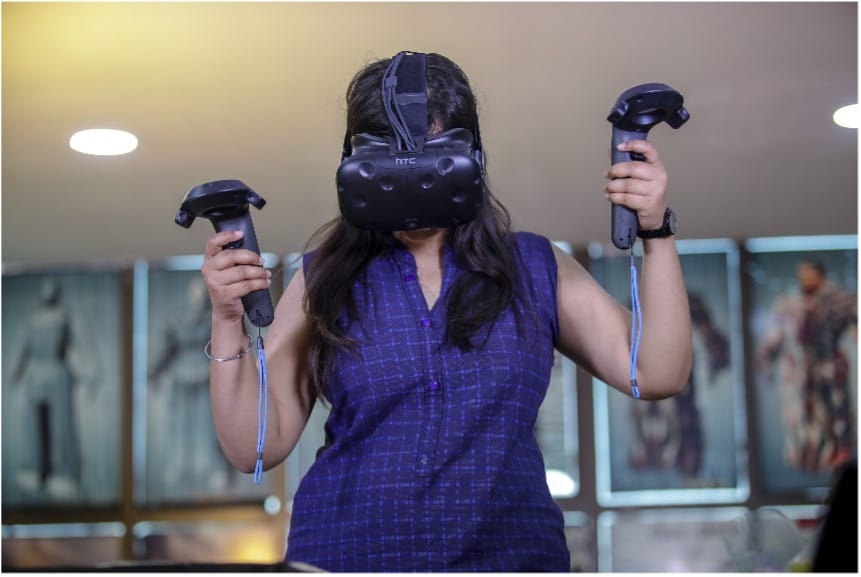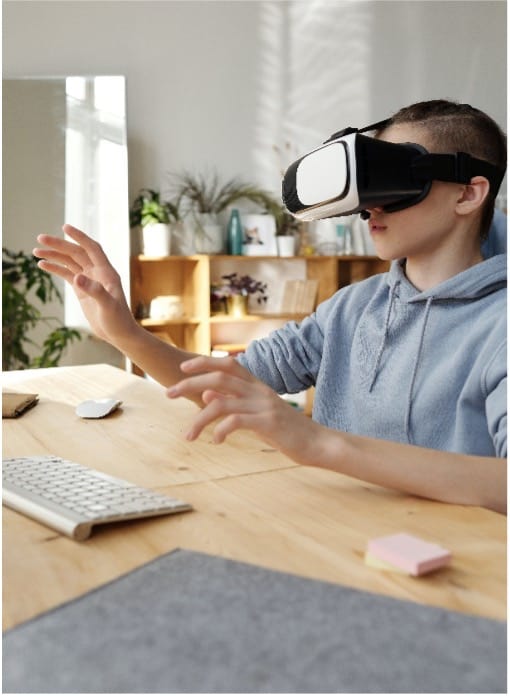Augmented reality (AR) is an interactive experience of a real-world environment in which computer-generated perceptual information is used to improve the items in the real world, sometimes spanning many sensory modalities such as visual, and olfactory. AR is described as a system that combines real and virtual worlds, allows for real-rime interaction, and allows for precise 3D registration of virtual and real items. This experience is so well integrated with the physical world that it is viewed as a fully immersive part of the actual world.
What is the definition of Virtual Reality (VR)?
Virtual reality (VR) takes these elements to the next level by creating a completely computer-generated recreation of a different environment. Using specific technology such as computers, sensors, headphones, these immersive simulations may simulate practically any picture or place possible for the participant.

So, what’s the big deal with augmented reality? To begin with, AR is significant because it will probably prove to be as powerful and widely applicable as the internet.
In, “Understanding Augmented Reality”, in which Alan B. Craig tries to persuade people of a notion that is firmly believed and supported: that AR is not a simple technology, but rather a full-scale medium composed of a collection of technological advances mixed with an evolving set of content conventions [1]. According to him, people’s reactions to AR were unlike anything they had seen before and required new thinking models and production techniques.
Augmented Reality (AR) vs Virtual Reality (VR)
The main differences between VR and AR are the equipment needed and the experience itself:
- While AR employs a real-world context, VR is entirely virtual.
- VR users are regulated by the system whereas AR users can regulate their presence in the real world.
- AR may be reached with a smartphone, but VR requires a headset equipment.
- While VR simply enriches a fictitious reality, AR enhances both the virtual and actual words.
Virtual Reality (VR) and Augmented Reality (AR) in Education
The importance of incorporating virtual reality into education and learning systems in part from the fact that this technology may improve and promote learning, boost memory capacity, and help people make better decisions while working in an engaging and stimulating conditions. Virtual reality-based learning has been shown [2] to increase learners’ attention levels by 100% and improve test performance by %30.

According to Altinpulluk [3], AR has various educational advantages. These advantages for students may be described as follows: reduced cognitive load, increased motivation and interest in the course, increased interaction between students, new chances for individual learning, concretization of abstract concepts, and increased achievement.
For all these reasons, VRLab Academy, online educational platform that provides science experiments in variety of subjects, physics, biology, chemistry, and popular science, firmly aims to use VR/AR technology to provide a more accessible future in education.
Take a look at all experiments at VRLab Academy and enhance your teaching power with us.
References:
[1] Alan B. Craig, “Understanding Augmented Reality: Concepts and Applications”, 2012.
[2] Noureddine Elmqaddem, “Augmented Reality and Virtual Reality in Education: Myth or Reality?”, 2019.
[3] G. Kurubacak & H. Altinpulluk, “Mobile Technologies and Augmented Reality in Open Education”, 2017.